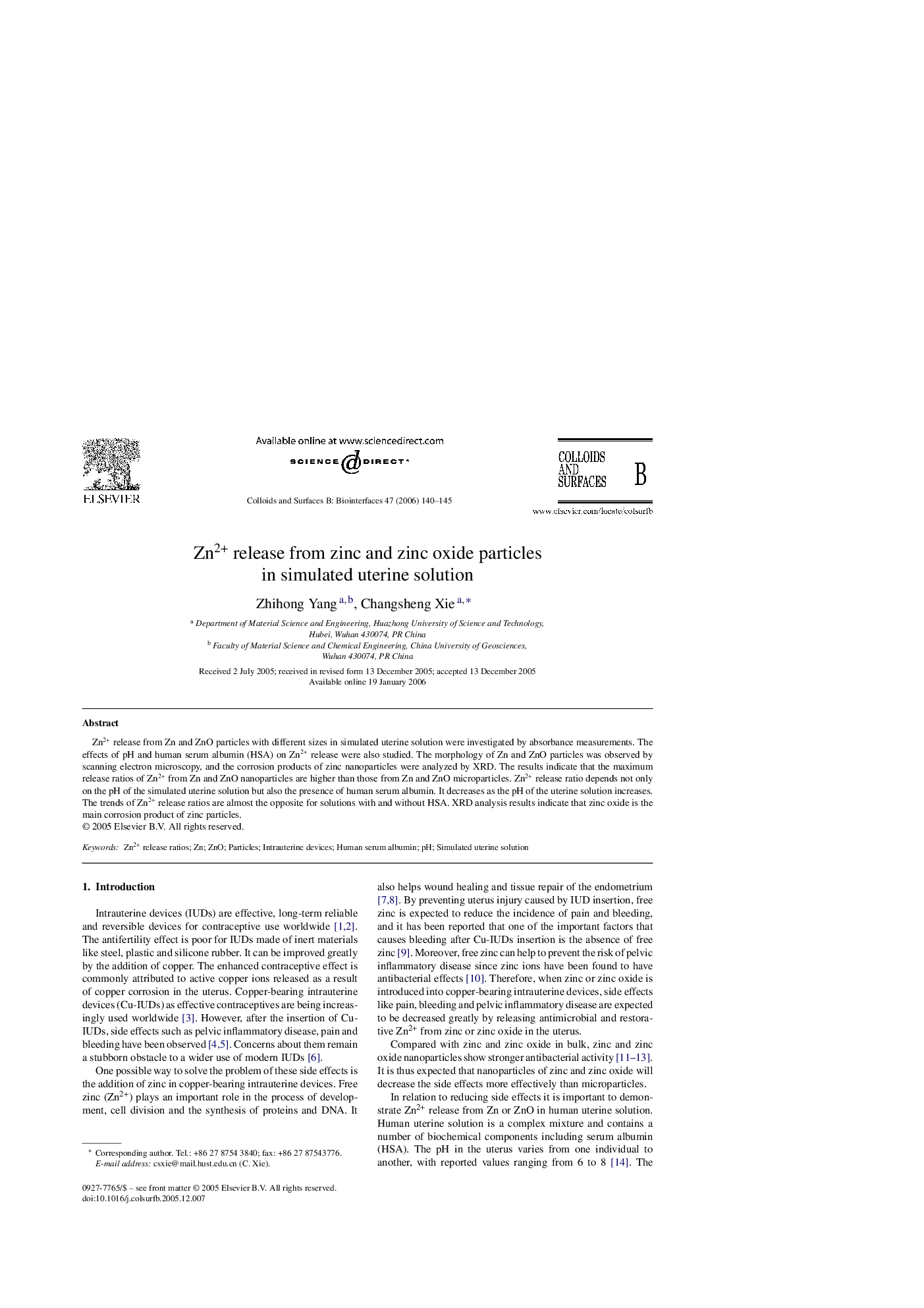| Article ID | Journal | Published Year | Pages | File Type |
|---|---|---|---|---|
| 602980 | Colloids and Surfaces B: Biointerfaces | 2006 | 6 Pages |
Zn2+ release from Zn and ZnO particles with different sizes in simulated uterine solution were investigated by absorbance measurements. The effects of pH and human serum albumin (HSA) on Zn2+ release were also studied. The morphology of Zn and ZnO particles was observed by scanning electron microscopy, and the corrosion products of zinc nanoparticles were analyzed by XRD. The results indicate that the maximum release ratios of Zn2+ from Zn and ZnO nanoparticles are higher than those from Zn and ZnO microparticles. Zn2+ release ratio depends not only on the pH of the simulated uterine solution but also the presence of human serum albumin. It decreases as the pH of the uterine solution increases. The trends of Zn2+ release ratios are almost the opposite for solutions with and without HSA. XRD analysis results indicate that zinc oxide is the main corrosion product of zinc particles.
